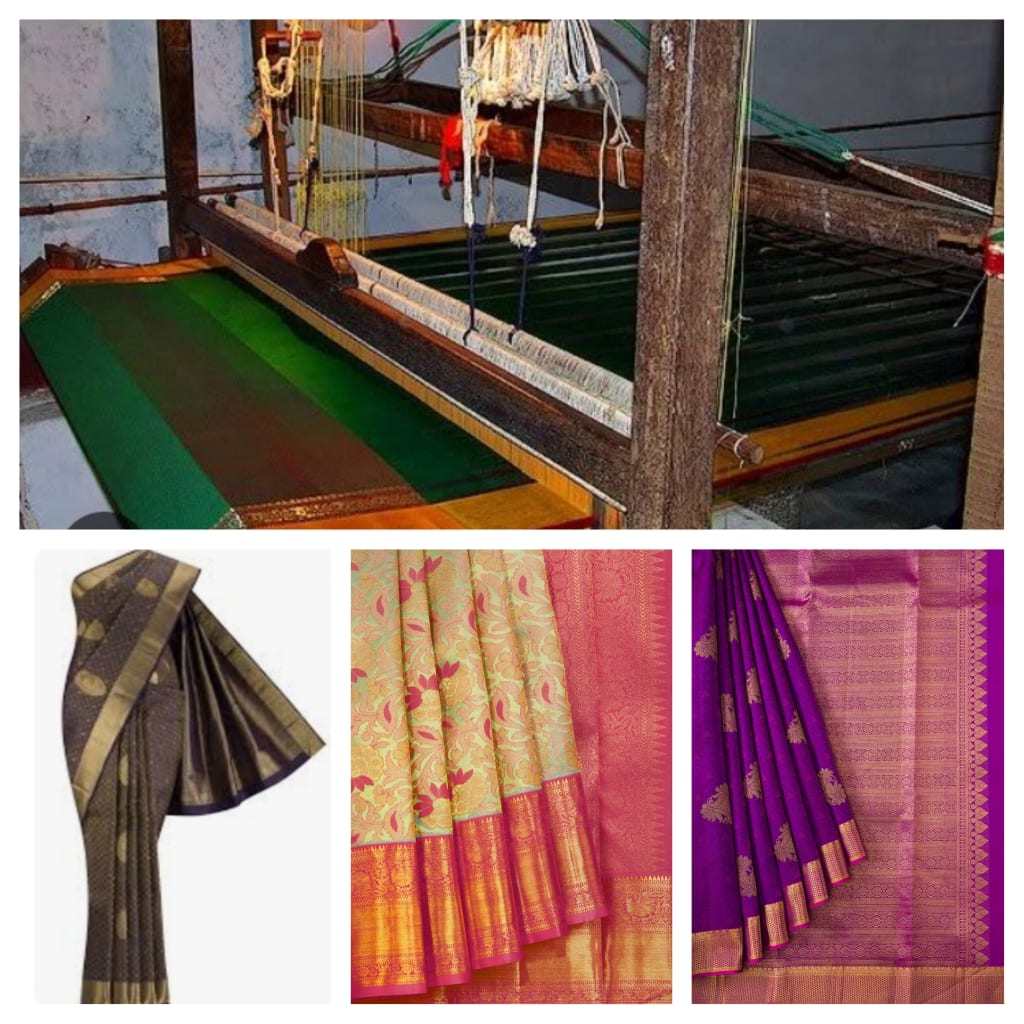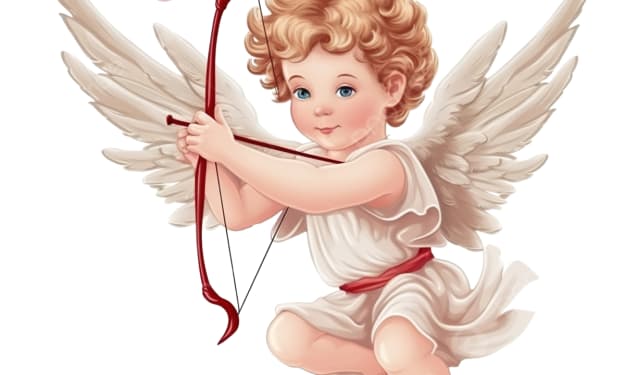
Kanchipuram or Kanchi Pattu sarees have a rich history dating back to the ancient town of Kanchipuram in Tamil Nadu, India. These silk sarees are renowned for their luxurious texture and intricate zari work. The tradition of weaving Kanchi Pattu sarees is believed to have originated over 400 years ago during the reign of the Chola dynasty.
Local weavers in Kanchipuram developed unique weaving techniques and patterns, making these sarees distinct. The sarees often feature vibrant colors, bold borders, and elaborate pallus. The silk used in Kanchipuram sarees is of high quality, and the zari (metallic thread) work adds a touch of opulence.
These sarees hold cultural and religious significance and are commonly worn during weddings and special occasions in South India. The meticulous craftsmanship and traditional designs have contributed to the enduring popularity of Kanchi Pattu sarees, making them an integral part of Indian textile heritage.
Kanchipuram sarees, also known as Kanchi Pattu sarees, are handwoven silk sarees that derive their name from the town of Kanchipuram in Tamil Nadu, India. Here are more details about these exquisite sarees:
1. **Silk and Zari:** The primary material used in Kanchipuram sarees is pure silk, known for its lustrous texture. The zari used in these sarees is typically made of fine gold or silver threads, contributing to the richness and grandeur of the designs.
2. **Weaving Process:** Kanchipuram sarees are woven with traditional weaving techniques, often involving pit looms. The distinctive feature of these sarees is the "korvai" technique, where the border and pallu are woven separately and then attached to the body of the saree.
3. **Motifs and Designs:** Kanchipuram sarees are renowned for their intricate designs and motifs inspired by temples, nature, and mythological stories. Common motifs include peacock, parrot, lotus, and checks. The borders are elaborately designed with contrasting patterns.
4. **Color Palette:** These sarees are available in a wide range of colors, from vibrant hues to subtle pastels. Traditional color combinations like red and gold are popular, especially for bridal sarees.
5. **Cultural Significance:** Kanchipuram sarees are considered auspicious and are an integral part of South Indian weddings. They are often passed down through generations as heirlooms and are associated with cultural and religious ceremonies.
6. **Geographical Indication (GI) Tag:** Kanchipuram sarees have received Geographical Indication (GI) status, recognizing their unique origin and cultural significance. This tag ensures that sarees made outside the Kanchipuram region cannot be labeled as authentic Kanchipuram sarees.
The art of weaving Kanchipuram sarees has been passed down through generations, and the weavers take great pride in preserving and promoting this centuries-old tradition. Each saree is a labor of love, reflecting the skill, creativity, and cultural heritage of the weavers in Kanchipuram.
Certainly, let's delve into more details about Kanchipuram sarees:
1. **Raw Materials:**
🔸**Silk:** The silk used is typically mulberry silk, known for its fine texture and durability.
🔸**Zari:** Pure gold or silver threads are used for zari work, adding a luxurious touch. However, due to cost considerations, sometimes copper wire is coated with gold or silver.
2. **Weaving Techniques:**
🔸**Korvai:** As mentioned earlier, the distinctive korvai technique involves separately weaving the border, body, and pallu and then intricately joining them.
🔸**Dobby or Jacquard Looms:** Weavers use traditional hand-operated looms, and some have adopted dobby or jacquard looms for intricate pattern weaving.
3. **Patterns and Motifs:**
🔸**Temple Designs:** Many Kanchipuram sarees feature designs inspired by the intricate sculptures and carvings found in South Indian temples.
🔸**Checks and Stripes:** Traditional checks, stripes, and floral patterns are common, contributing to the unique aesthetic.
4. **Weight and Density:**
🔸**Heaviness:** Kanchipuram sarees are known for their substantial weight, a testament to the quality of silk used and the density of the weaving.
🔸**Durability:** The dense weaving contributes to the durability of these sarees, making them suitable for special occasions and ceremonies.
5. **Special Occasions:**
🔸**Bridal Wear:** Kanchipuram sarees are highly sought after as bridal attire in South India. They are considered a symbol of opulence and grace.
🔸**Festivals and Celebrations:** These sarees are also worn during festivals, religious ceremonies, and other significant celebrations.
6. **Evolution of Designs:**
🔸**Contemporary Touch:** While traditional designs are cherished, contemporary variations with modern motifs and color combinations have also emerged to cater to changing preferences.
7. **Artisan Communities:**
🔸**Weaving Clusters:** Kanchipuram is home to several weaving clusters, and the art of weaving is often a family tradition passed down through generations.
🔸**Challenges:** Despite the recognition and demand, weavers face challenges such as fluctuating raw material prices and competition from power looms.
Kanchipuram sarees represent a harmonious blend of tradition, craftsmanship, and artistic expression. The attention to detail and the timeless appeal make them a cultural treasure and a symbol of South Indian heritage.
Certainly, let's explore more specific details about Kanchipuram sarees:
1. **Silk Quality:**
🔸The silk used in Kanchipuram sarees is typically sourced from Karnataka and is known for its fine quality and sheen.
🔸The zari used for weaving often contains a percentage of pure gold or silver, adding a distinct richness.
2. **Traditional Borders:**
🔸Borders of Kanchipuram sarees are a highlight, featuring intricate designs like the "Nakshi" (temple) border, checks, and stripes.
🔸These borders often showcase meticulously woven motifs such as elephants, peacocks, and floral patterns.
3. **Pallu Designs:**
🔸The pallu, or loose end of the saree, is another focal point with elaborate designs and motifs.
🔸Grand pallus often display scenes from epics like the Ramayana or Mahabharata, adding a storytelling element to the saree.
4. **Color Symbolism:**
🔸Traditional colors like red, green, and yellow are popular for weddings and special occasions.
🔸Each color holds cultural significance; for instance, red symbolizes fertility and prosperity.
5. **Special Weaves:**
🔸Some Kanchipuram sarees incorporate special weaving techniques like "Vanki Border," which resembles a traditional armlet design.
🔸The "Gopuram Border" features temple tower motifs, reflecting the architectural beauty of South Indian temples.
6. **Handcrafted Excellence:**
🔸Weaving a Kanchipuram saree can take anywhere from a few days to several weeks, depending on the complexity of the design.
🔸The entire process, from dyeing the silk to handweaving the intricate patterns, is done by skilled artisans.
7. **Geographical Indication (GI) Status:**
🔸Kanchipuram sarees have been granted Geographical Indication (GI) status, emphasizing their unique origin and traditional craftsmanship.
8. **Modern Trends:**
🔸While preserving traditional designs, contemporary Kanchipuram sarees may incorporate modern elements to appeal to a wider audience.
🔸Designers often experiment with colors, motifs, and textures to create innovative variations.
Kanchipuram sarees stand as a testament to the dedication and artistry of the weavers who have upheld this craft for generations. Each saree is not just a piece of clothing but a work of art that encapsulates the cultural heritage of South India.
About the Creator
SATHYA
Start writing...
Enjoyed the story? Support the Creator.
Subscribe for free to receive all their stories in your feed. You could also pledge your support or give them a one-off tip, letting them know you appreciate their work.






Comments (2)
nice
good